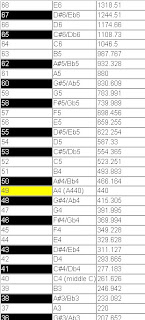

It is less susceptible to noise and has better sound quality. It is susceptible to noise and has low sound quality. The modulation index is always greater than 1. While transmitting the information the frequency of the carrier wave is modified.įrequency ranges from 535 to 170h Kilohertz.įrequency ranges from 88 to 108 Megahertz. While transmitting information the amplitude of the carrier wave is modified. Here are some of the differences between Frequency Modulation and Amplitude Modulation. Ɵ is the phase of the modulating signal Difference between Amplitude Modulation and Frequency Modulationįrequency Modulation is the advanced method of transmitting information when compared to Amplitude Modulation in various aspects. As we know, a modulating signal is the transmitting of information or message after being converted into an electronic signal. The Frequency Modulation is often called FM. Frequency Modulationįrequency modulation is the process of encoding information on a particular analogue or digital signal by varying the carrier wave frequency in accordance with the frequency of the modulating signal. In the case of VSB modulation, the vestige which is a part of the signal is only modulated, including one sideband. In the case of DSB-SC modulation, bandwidth remains constant even though the transmitted wave contains only upper and lower sidebands. In the case of SSB modulation, between an upper sideband and lower sideband, the amplitude-modulated wave contains either one of two.ĭouble Sideband-suppressed Carrier Modulation Three types of amplitude modulation can be found –

Φ is the phase signal of the initial reference timeĪm is the amplitude of modulating signal Types of Amplitude Modulation
#Frequency of note c portable
It is mostly used in electronic communications like portable two-way radios, citizens band radio, VHF aircraft radio, etc. It is used to transfer information through a radio wave. This technique was established by Landell de Moura and Reginald Fessenden in the 20th century when conducting radiotelephone experiments. The amplitude modulation is often called AM. Radio broadcast signals under AM use lower carrier frequencies, and thus they can travel long distances, and that is larger than FM.Īmplitude modulation is the process in which the wave signals are transmitted by modulating the amplitude of the signal. To explain the Amplitude modulation definition, it can be mentioned that, in this modulation technique, depending on the information signal, the amplitude of a carrier varies. Amplitude Modulationīack in the 1870s, the concept of broadcasting any audio production through radio waves was discovered, and that is when the AM method was also introduced. Amplitude modulation is used in technologies like WiFi, while other radio technologies still use digital frequency modulation. But they are used to send high-speed digital data over high-frequency carrier waves. Both FM and Am are still with us till today. Before FM radio it was AM radio, which has the worst sound quality ever. People of this generation may not be aware of this thing called FM radio, where people listen to the newest pop songs over blur and static.


 0 kommentar(er)
0 kommentar(er)
